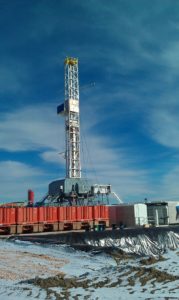Managed Pressure Drilling #
During drilling, annular pressure will exist between the drill string and the wellbore. Higher pressure can make it harder to drill and disrupt the process — so steps need to be taken to control this pressure and ensure it doesn’t get in the way of extracting material safely and efficiently. That’s where managed pressure drilling comes in. Here’s what you should know about this highly effective method.
What is managed pressure drilling? #
Managed pressure drilling is an adaptive drilling method that enables precise control over a wellbore’s annular pressure. Once teams understand the downhole pressure they’re working with, drillers will keep pressure slightly above the pore pressure (the pressure of the fluids in the wellbore) but well below the fracture pressure.
If the pressure varies during the process, drillers will take corrective action like adjusting mud density, changing the backpressure, adjusting the annular fluid level, and controlling friction, among other methods. More advanced technology is helping drillers dynamically implement these corrective actions as variations in pressure arise.
This drilling method is used when the drilling window — which is the difference between the pore pressure and fracture pressure — is small.
How does a rotating control device help with this process? #

Photo courtesy: Wikipedia
A rotating control device is a versatile pressure management tool. It is used during drilling to create a seal around the drill string, which prevents the release of wellbore fluids into the atmosphere. With a more consistent volume of wellbore fluids, the wellbore’s pressure level is less variable. Over the years, rotating control devices have grown in sophistication and enable drilling in more variable environments. They’ve made it so that managed pressure drilling is no longer simply a risk minimization method, but also a tactic that can boost performance on drilling projects.
What are some advantages and disadvantages? #
Managed pressure drilling gives drillers more control over costs and risks when drilling in pressurized wellbores. From rugged marine conditions to more unconventional onshore well settings, managed pressure drilling helps teams drill in places that might have previously seemed impractical or even impossible. And most importantly, managed pressure drilling helps teams conduct this work safely and with less environmental impact.
But managed pressure is a complex practice — and unfortunately, it’s still considered a “niche” process in some circles compared to other forms of drilling. For that reason, it sometimes calls for help from third-party contractors. Luckily, as technology improves and acceptance grows, more and more teams are becoming fluent in managed pressure drilling practices.
In short, managed pressure drilling helps teams work more safely and more cost-efficiently — and rotating control devices are lowering the barrier for entry into this complex but vital method.
Katch Kan System can be used for managed pressure drilling pretty much the same way it’s used for conventional drilling. If you need the drilling fluid containment system required for this type of drilling, don’t hesitate to reach out to Katch Kan.




